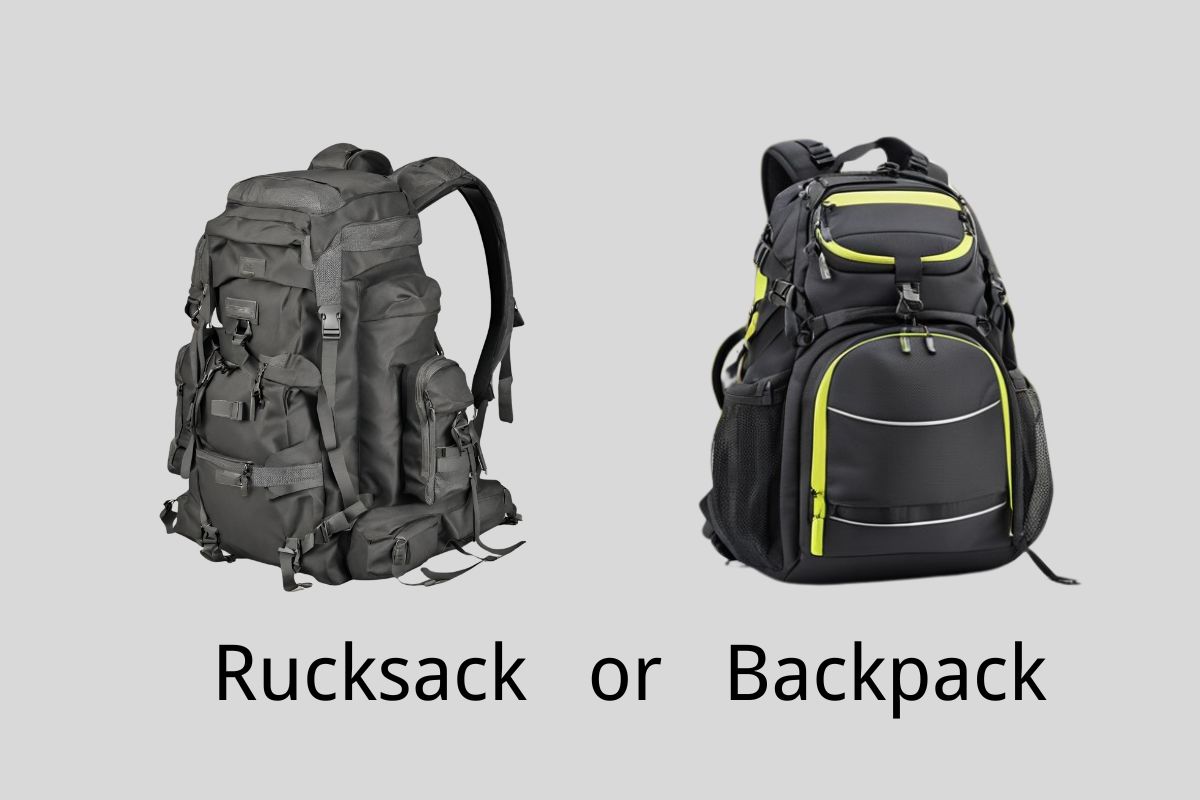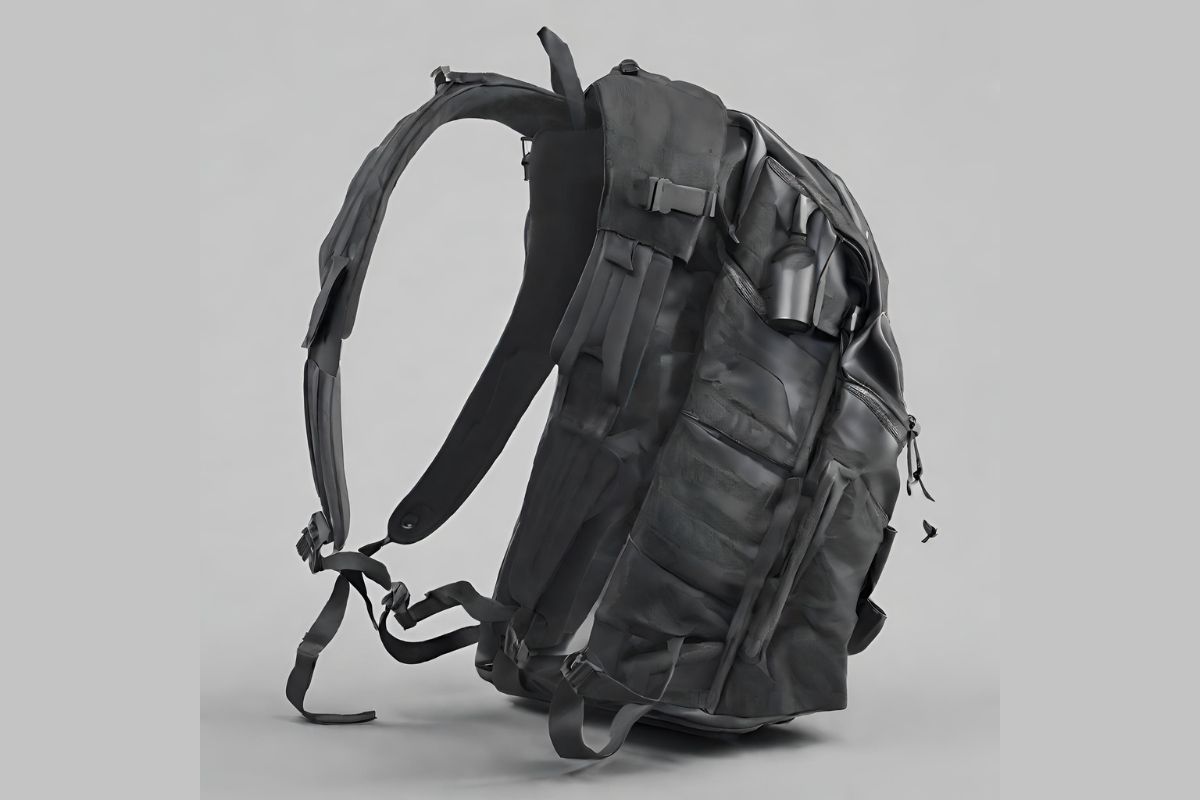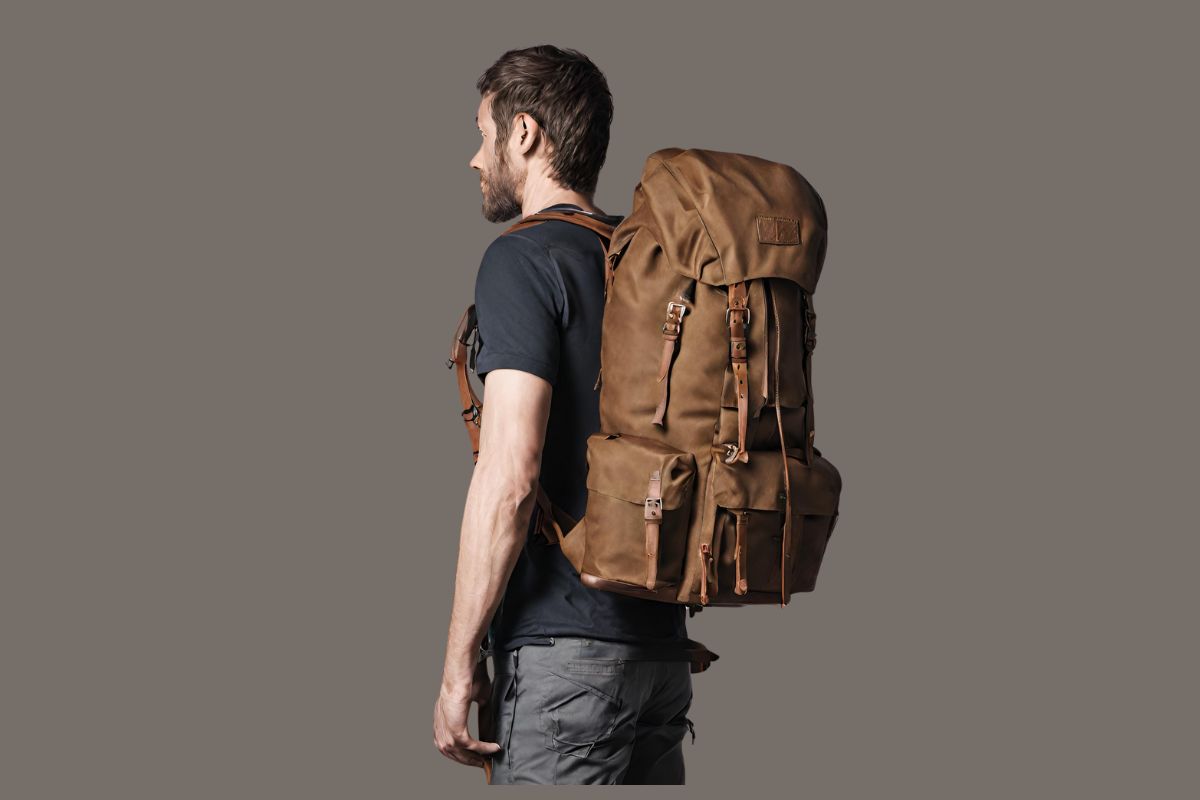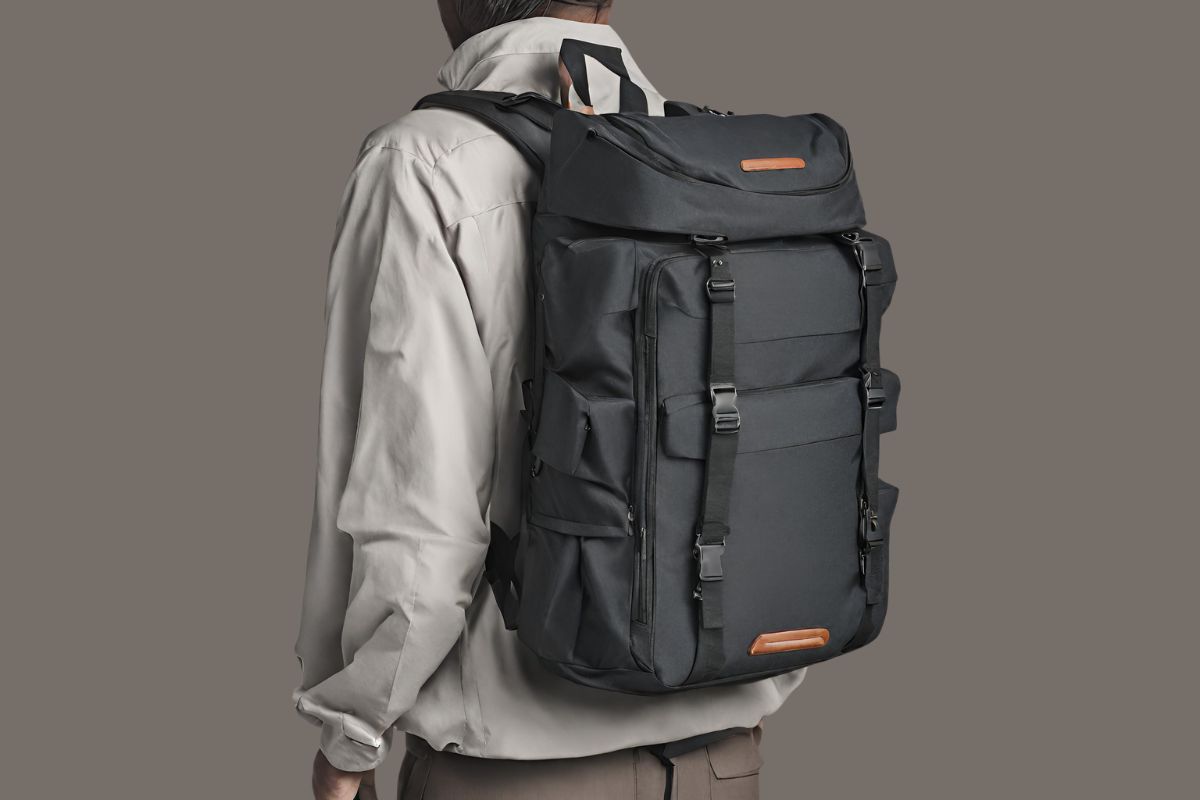What Is Difference Between Rucksack and Backpack

While browsing various backpack websites recently, I noticed the term “rucksack” cropping up frequently in advertisements, as opposed to the more commonly seen “backpack.” Since these two words are often confused in their usage, it may be confusing to you. Although people often use the two words interchangeably, there are actually some discrete differences between them. So, what is a rucksack, and what is a backpack? What are the unique characteristics of each?
Today, we’re going to delve into the difference between rucksack and backpack to demystify this endless debate and give you a fuller understanding of the differences between the two.
I. Definition of Rucksack vs Backpack
While backpacks and rucksacks are often used interchangeably, there are some differences in their construction and uses. It is very important to understand the differences between backpacks and rucksacks, especially when considering options for carrying gear.
What Is a Rucksack?
A rucksack is a large, robust bag designed for carrying heavy loads over long distances or challenging terrain. It typically features a top-loading design, with a main compartment secured by a drawstring and covered by a flap or lid for extra protection.
This type of bag is extremely suitable for hiking, camping, and military activities that require ample space and durability. Beyond the basic structure, some rucksacks may also include additional features to accommodate large pieces of equipment, providing a versatile experience for travelers and outdoor enthusiasts.
What Is a Backpack?
In contrast, a backpack refers to a bag with a large main compartment, two shoulder straps, and extra pockets for organizing items. The materials used range from waxed canvas to leather and synthetic fibers, making it suitable for everyday activities such as commuting, school, and light travel.
The term ‘backpack’ is commonly found in American dictionaries and refers to a versatile bag designed for carrying books, electronic devices, and other daily necessities.

II. Structural Differences and Feature Comparison
In the realm of personal belongings, rucksacks and backpacks are distinguished by their shape and structural design. These two aspects determine their respective uses and the environments for which they are best suited.
Physical Structure of a Rucksack
Rucksacks are known for their larger and sturdier physical structure, intended to carry heavier items. They often employ an external or internal frame for strong structural support, ensuring even weight distribution. The capacity of a rucksack typically ranges from 40 to 80 liters, sometimes even larger.
To better meet the needs of users, rucksacks are designed with multiple compartments for organized storage. Additionally, some rucksacks are equipped with padded waist belts and chest straps, aiming to effectively transfer the load to the hips for better stability.
Physical Structure of a Backpack
In comparison, the physical structure of a backpack focuses on lightweight, everyday use. The capacity of a standard backpack is smaller, usually between 20 to 30 liters, more suitable for carrying light items like books or laptops. Shoulder straps are the primary means of support, and their body-hugging design allows the backpack to fit more closely to the body. This design is ideal for casual, urban settings or short trips.
Feature Comparison
These design differences are key to distinguishing between rucksacks and backpacks, allowing users to choose the most suitable option based on their planned activities and load requirements.
| Feature | Rucksack | Backpack |
|---|---|---|
| Size | Larger, extending below waist | Smaller, resting above lower back |
| Frame | Often present, aids in heavy load distribution | Rarely present, as it’s intended for lighter loads |
| Material | Typically crafted from heavy-duty materials for durability | Often made from lighter materials for day-to-day use |
| Straps | Reinforced stitching, may include hip belts and chest straps | Generally less reinforced, primarily shoulder straps |
| Capacity | 40-80 liters, suitable for longer trips | 20-30 liters, ideal for daily activities |
III. Material Comparison
The choice of material for a backpack directly determines its key characteristics such as strength, weight, and weather resistance. An in-depth understanding of these material properties is essential to selecting the right backpack for different activities and environments.
Materials Used in Rucksacks
Rucksacks are typically made from sturdy and durable materials to withstand heavy loads and harsh conditions. Common materials include:
- Canvas: Known for its toughness, used in traditional rucksacks.
- High-density nylon: Offers excellent durability and tear resistance.
- Ripstop fabric: Contains reinforcement threads to prevent tears from expanding.
Materials Used in Backpacks
Backpacks are designed for light use, and the materials often reflect this:
- Polyester: Popular for its light weight and water resistance.
- Standard nylon: Balances weight and flexibility.
- Leather: Used for stylish or casual backpacks, aesthetically pleasing.

IV. Performance Comparison
Capacity
- Rucksack: Often have larger capacities to carry more equipment and supplies. They may feature a large main compartment and several smaller external pockets for organized access to items.
- Backpacks: Capacities vary widely, ranging from small day-use backpacks to larger ones suitable for travel. However, backpacks generally have a smaller capacity compared to specialized rucksacks.
Support and Comfort
- Rucksack: Many rucksacks come with reinforced back support, such as internal frames, adjustable shoulder straps, and waist belts, along with ample padding, to accommodate carrying heavy loads for extended periods.
- Backpacks, while also designed with support in mind, may not be as specialized as rucksacks. Everyday backpacks might focus more on being lightweight and stylish rather than support for prolonged carrying.
Durability and Materials
- Rucksack: Typically made from more abrasion-resistant, waterproof, or ripstop materials like nylon or canvas to withstand harsh outdoor environments.
- Backpack: Materials can vary from leather to synthetic fibers, with choices often based on fashion and personal preference rather than just durability.
Attachments and Features
- Rucksack: May come with attachments for specific activities, such as sleeping bag straps, ice axe loops, and hydration reservoir compartments.
- Backpacks might feature specialized compartments for laptops, headphone ports, USB charging ports, etc., which are more suited for everyday use or commuting.
Price
- Rucksack: Due to more complex designs and durable materials, they may be priced higher than standard backpacks.
- Backpacks: Prices range widely, depending on the material, brand, and design, from very affordable options to high-end, expensive models.

V. Applications and Uses
Each backpack is designed with a specific purpose in mind, with features that match the needs of different users.
Typical Applications for Rucksacks
Rucksacks are often designed for harsher environments and more demanding activities. Their features include:
- Top-loading: Suitable for carrying large equipment.
- Spacious: Provides ample space for camping gear, hiking tools, or fishing essentials.
- Durable: Usually well-crafted to withstand adverse conditions, making them ideal for outdoor adventures.
Rucksacks are commonly used for:
Multi-day hiking trips
Military deployments
Long-duration travel in challenging terrain
Typical Applications for Backpacks
In contrast, backpacks are tailored for everyday use and convenience. Their features include:
- Smaller size: Easy to carry for daily commutes or school.
- Organizational pockets: Neatly store books, electronics, and personal items.
- Comfortable design: Equipped with padded shoulder straps for shoulder comfort during extended use.
Common uses for backpacks include:
Daily commutes to school or work
Short day trips or excursions
Casual travel requiring light packing
VI. Noteworthy Brands
When choosing a backpack or rucksack, both brand reputation and model number are important. Leading brands usually offer durability, innovative design and comfort, as well as a reliable after-sales guarantee, while providing the market with products suitable for a wide range of activities.
Noteworthy Rucksack Brands
Osprey – Known for their backpacking and travel rucksacks, like the Osprey Atmos AG and Ariel AG series, which prioritize ergonomic design and load distribution for long treks.
Deuter – Offers rucksacks engineered for comfort and utility, notably their Aircontact and Futura Vario lines that cater to serious hikers and adventurers with integrated ventilation systems.
Noteworthy Backpack Brands
The North Face – Synonymous with a fusion of style and function, they offer resilient models like the Borealis and Recon, which serve well for both urban commuting and outdoor excursions.
JanSport – A staple in the realm of backpacks, JanSport’s SuperBreak and Right Pack lines provide classic, reliable options for daily use with a variety of colors and designs to choose from.
VII. Final Thoughts
When distinguishing between rucksacks and backpacks, it’s essential to recognize the differences in design, capacity, and intended use. Ultimately, it’s about matching the backpack to your lifestyle: minimalist urban dwellers might prefer a stylish backpack, while hikers or military personnel might opt for a spacious rucksack. Armed with this information, shoppers can make informed decisions to satisfy their carrying needs.
VIII. Frequently Asked Questions
How to pack a rucksack for training?
To pack a rucksack for training, start by gathering all the items you’ll need, such as workout clothes, a towel, water bottle, and any training equipment. Place heavier items at the bottom and close to your back, and distribute the weight evenly. Use compartments or packing cubes to organize smaller items. Make sure that any items you need quick access to, like your water bottle or snacks, are in the top or side pockets.
Can we carry rucksack in flight?
Yes, you can carry a rucksack on a flight. However, it must adhere to the airline’s size and weight restrictions for carry-on or checked luggage. It’s advisable to check with the specific airline before traveling to ensure your rucksack meets their requirements.
Is rucksack allowed in cabin baggage?
Rucksacks are allowed as cabin baggage on most airlines as long as they fit within the airline’s size restrictions for carry-on luggage. It’s important to check the size and weight limits of the airline you are flying with, as these can vary.
Where to buy rucksack near me?
If you’re looking to purchase a backpack nearby, you can visit outdoor or sporting goods stores in your area. Alternatively, you can also search online for luggage or travel gear stores. Additionally, you may explore online retailers that offer delivery services to have the backpack delivered to your doorstep.
How to pack rucksack for camping?
When packing a backpack for camping, start by lining the interior with a waterproof bag or pad. Place your sleeping bag at the bottom, followed by heavier items such as a tent or cooking utensils and fit them snugly on your back. Clothing and lighter items should be placed around the heavier items. Make sure that frequently used items and essentials such as first aid kits, maps and compasses are easily accessible. Finally, adjust the straps to ensure that the backpack is comfortable to carry.

0 Comments